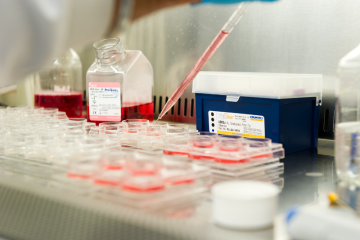Project grant
Replacement of animals in cancer drug development by using 3D in vitro functional assays for increased predictive power

At a glance
Completed
Award date
September 2010 - December 2012
Grant amount
£291,483
Principal investigator
Dr Louis Chesler
Co-investigator(s)
- Professor Sue Eccles
Institute
Institute of Cancer Research
R
- Replacement
Read the abstract
View the grant profile on GtR
